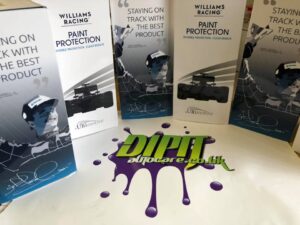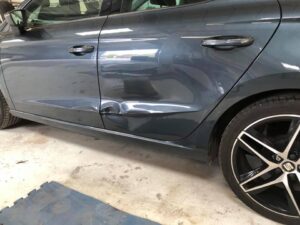Whether it is a minor scratch on the bodywork, a scuffed alloy wheel, a chip on the edge of the car door or a graze on the bumper, it is always advisable to repair any damage at a quality repairer before you hand back the keys. Returning a damaged vehicle at the end of your lease period could end up costing you more as the lease company will take it to a body shop of their choice, with costs outside of your control; you will also likely incur their administration charges for the privilege of this as well. At Dipitautocare not only will we ensure your vehicle will be accepted within the general wear and tear range, but we also guarantee our workmanship. We will be happy to support any potential issues that arise
‘Fair Wear and Tear’
As part of your contract, your vehicle will need to be returned in a state that complies with ‘fair wear and tear’ guidelines.
‘Fair wear and tear’ is any acceptable deterioration to your lease car that occurs during normal usage over the period of the contract, this includes damage to the tyres, bumpers, windows glass and interior. You will not be charged for fair wear and tear damage.
Fair wear and tear does not include damage that occurs due to a specific event or series of events such as impact, inappropriate stowing of items, harsh-treatment, negligent acts or omissions.
The fair wear and tear guide (www.bvrla.co.uk/guidance/fair-wear-tear.html) is produced by the British Vehicle Rental and Leasing Association (BVRLA) and offers an industry-standard description of acceptable levels of fair wear and tear. We recommend that you read this information both at the start and again towards the end of your car lease
Each finance company (the ‘funder’) however, also produces its own set of fair wear and tear guidelines which we also recommend you read, as whilst these will be similar to and based on the BVRLA guidelines, there may be some slight nuances and it is these that you will need to comply with.
Things to look out for
Most of our customers do not incur end of lease penalties. When we do see penalties however, they tend to relate to (but are not restricted to) a list of usual types of damage, so we recommend you pay particular attention to these when conducting your own personal inspection of your vehicle:
- Stains, rips, tears and burns on seats
- Scratched or scuffed paintwork
- Chips and dents on the bodywork
- Damage to wheels and trims
- Scratches over 25mm (relative to the vehicle’s age and mileage)
- Scratches under 25mm (where the primer and bare metal is showing)
- Accident damage and dents
- Missing sets of keys



